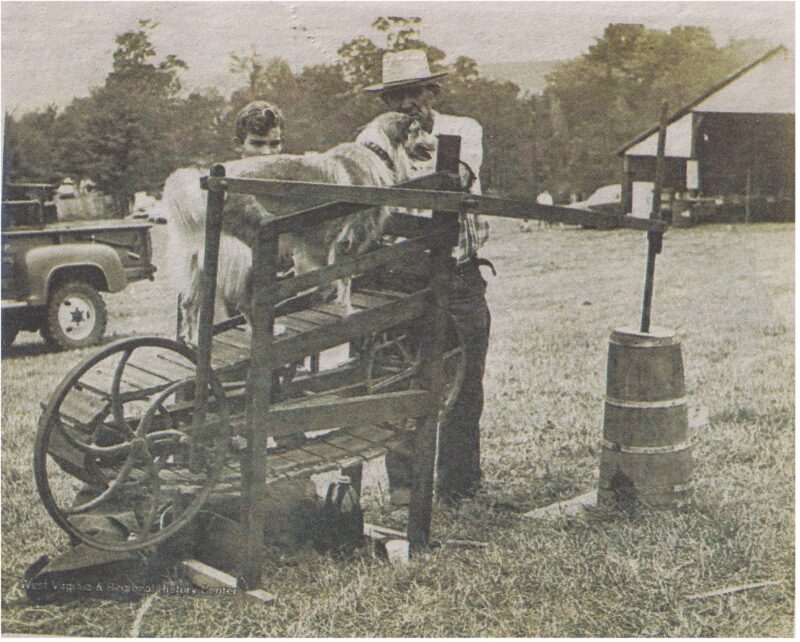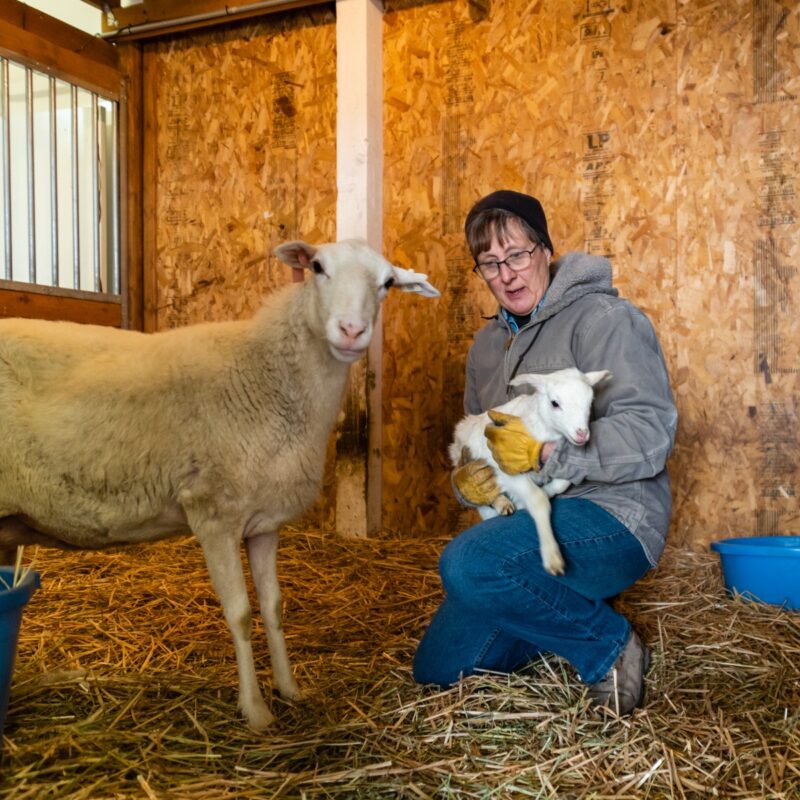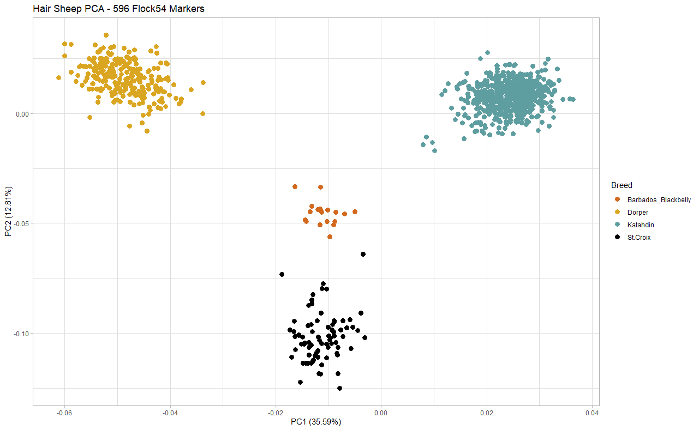St. Croix sheep are primarily meat sheep, but they can do other jobs, too. They eat vegetation to reduce fire risk, to control invasive species or as organic weed control. They can produce milk for dairying and they can be great sheep to train herding dogs. And back in history at least, they could churn butter, too.
The Illustrated Catalogue of Agricultural and Horticultural Implements printed in 1857 by Tredwell and Pell, describes a butter churning machine, made of slats riveted to two india-rubber straps, forming a self-supporting platform on upon which the animal walks. The motion of the endless platform giving action to the forward drum, through it to a crank upon one end producing the necessary motion required to operate the ordinary dash churn.
“A sheep is found fully equal to a dog and the work is not hard upon either….sufficient to do all the churning for a large dairy”, the catalog says.
The Transactions of the New York State Agricultural Society in 1860 noted that: “Unquestionably, the power propelled by sheep is much the cheapest and most efficient. A sheep will churn two or three times a day, even in warm weather without inconvenience, and is much less expensive to keep than a dog as its food is mostly grass. Choose sheep that can stand the heat well, and are inclined to be mild in disposition. They soon learn to drink buttermilk, and grow large and fleshy.”
But if you prefer not to employ your St. Croix sheep churning butter, then there is always this:
“We have no doubt, as to their superiority over all others breeds as mutton sheep, their hardihood, and their unrivaled symmetry and beauty. No sheep is more ornamental upon the lawn or field in summer, none presents so singularly comfortable and contented an appearance, as with the quietness of its nature, it crunches the crisp dry hay among the snows of winter. Where even a few sheep only are kept, for the pleasant and legitimate pride of ownership, for the supply of the family table, we regard the St. Croix as the best sheep. (OK, it actually reads ‘Southdowns” not “St. Croix”, but the sentiment is the same!)





